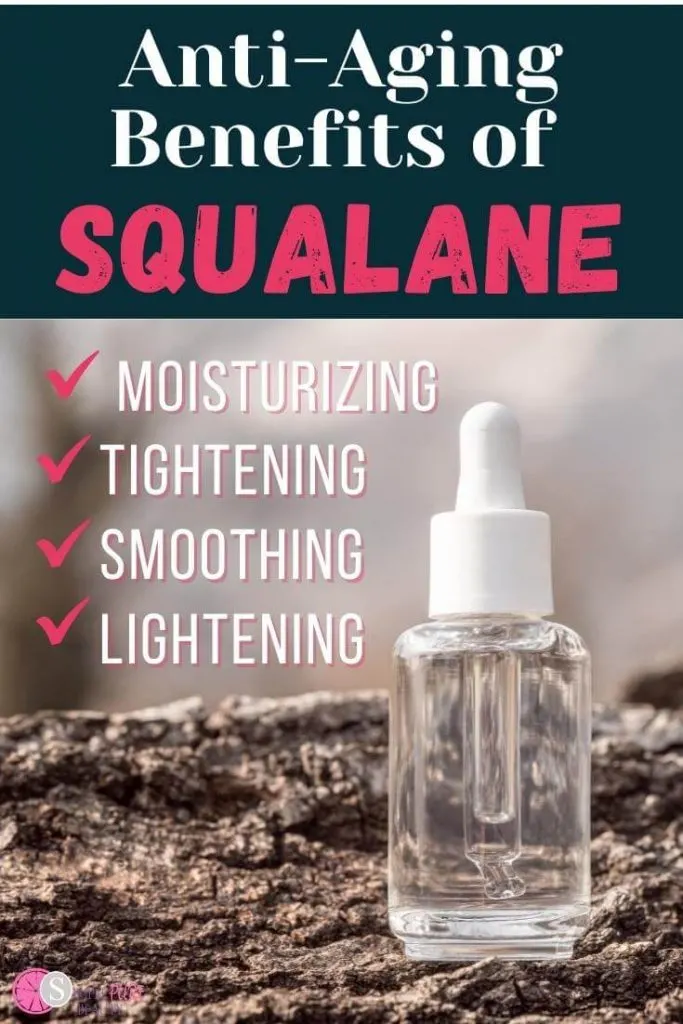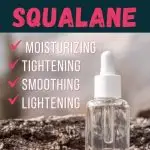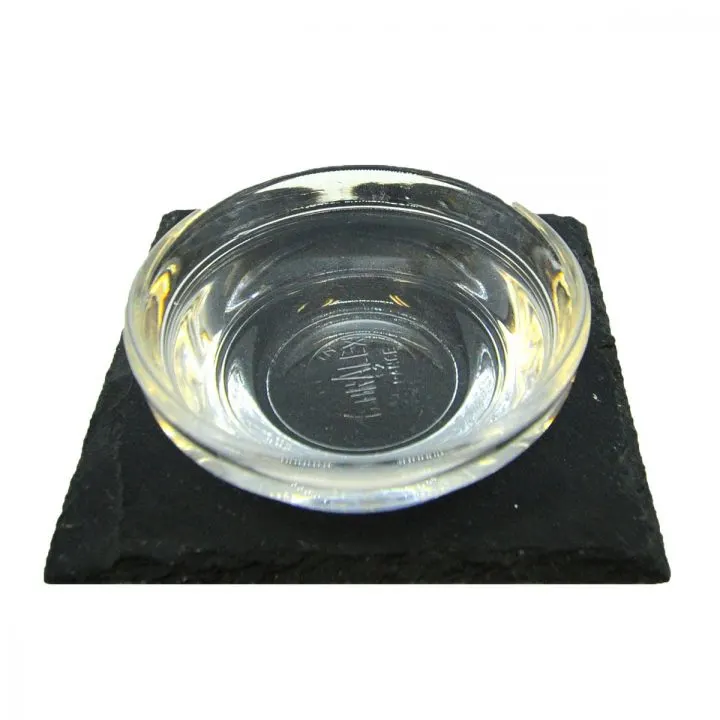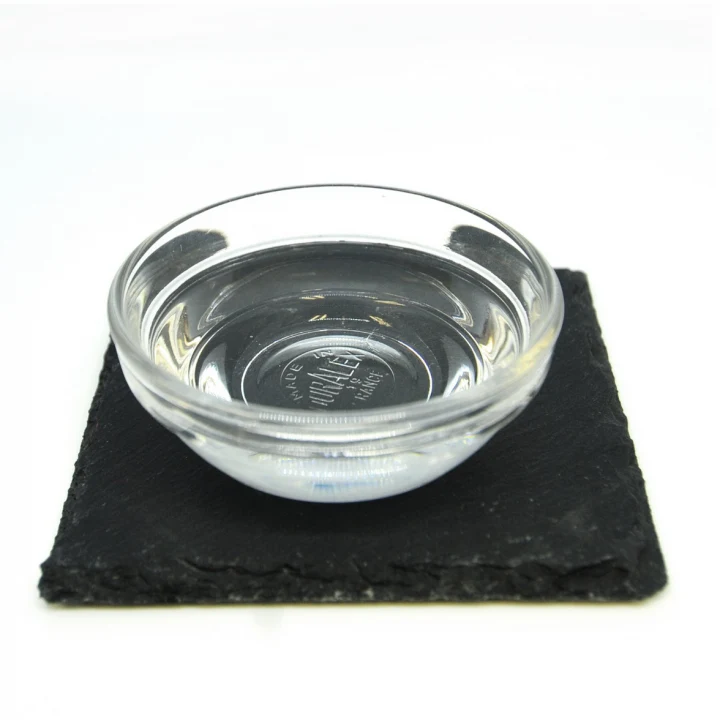Squalane in skin care may not be a term that you are familiar with, but it is such a valuable ingredient in anti-aging skincare!
This oil mimics oils in your skin’s lipid layer, making it useful in a wide variety of skincare and cosmetic applications.
Let’s learn more about this oil and how you can incorporate it into your skincare routine!
What is squalane oil?
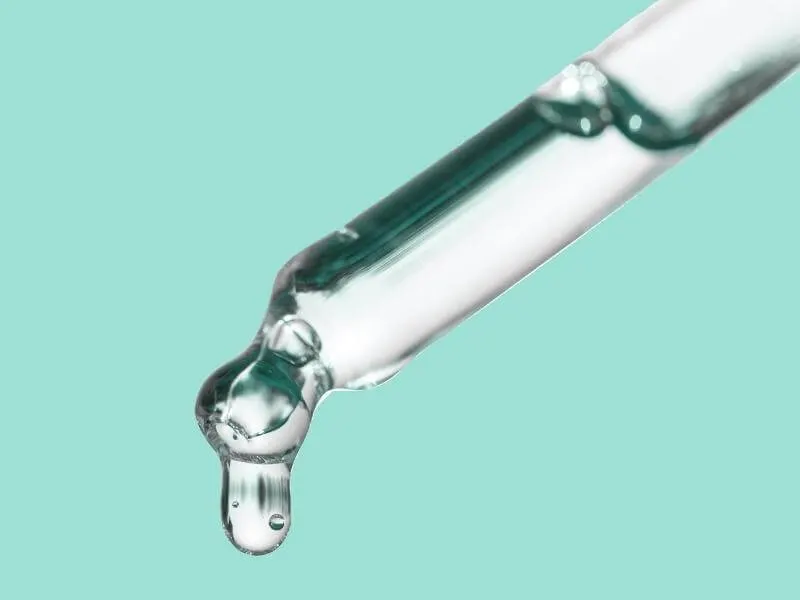
Squalane is an oil that is derived from squalene (with an “e”). It is also found naturally in olives, rice bran, sugarcane and shark livers.
Squalane oil is a hydrogen saturated form of squalene that does not interact with oxygen and can be incorporated into cosmetic and skincare products.
According to Healthline:
Animal and plant squalene is too unstable to be used in skin care products. When exposed to oxygen, it can become rancid and spoil quickly.
Before it can be used in skin care products, squalene must be hydrogenated into squalane (with an “a”), which is a stable form of the molecule.
Hydrogenation is the process of converting squalene from an unsaturated oil to a saturated oil (squalane). Hydrogenation makes the oil more skin-friendly and helps increase its shelf life.
Squalane oil mimics natural lipids that are found in our skin to help moisturize, protect, and repair our skin.
It is a wonderful addition to skincare for many skin types because our bodies naturally know what to do with it!
Is squalane ethically sourced?
The cosmetics industry is historically known for creating wonderful products at the expense of many animals.
However, many organizations and people are working tirelessly to change that; and many of us who make our own products tend to source sustainable ingredients that are ethically sourced.
This includes squalane oil.
In big box store cosmetics, you can find squalane in many products. It is a common ingredient in many anti-aging products, and unless the product is clearly marked cruelty-free or vegan, then there is a good chance that the squalane in that product was sourced from deep-sea sharks.
The livers of sharks are naturally high in squalane oil, and this is where many big companies source their squalane.
The good news is there are many vegan-friendly ways you can add squalane to your routine.
This means that there are no animal sources used to harvest or collect the ingredients, including squalane that is derived from sugar cane, olives or rice bran!
You can also find squalane in many natural carrier oils that make adding to your skincare routine even easier.
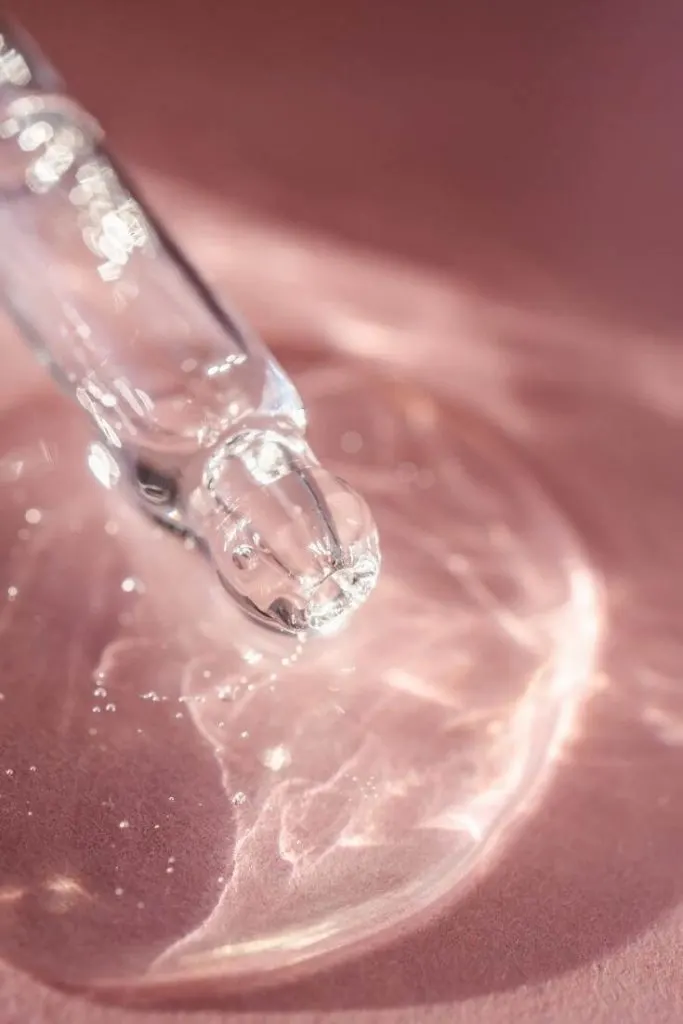
What is squalane found in naturally?
If you want to incorporate squalane into your skincare routine but aren’t sure where to start, I have some great news!
Here are a few of my favorite carrier oils that include naturally occurring squalane:
- Argan Oil
- Camellia Seed Oil
- Hazelnut Oil
- Kiwi Seed Oil
- Macadamia Nut Oil
- Milk Thistle Oil
- Olive Oil
- Pumpkin Seed Oil
- Rice Bran Oil
- Squalane Oil (from sugar) (from olives)
- Wheat Germ Oil
In the cosmetic industry, squalane oil can be found in many of your favorite products, including anti-aging serums, moisturizers, lip products, and even hair care!
It is a popular skincare ingredient because it has a variety of applications.
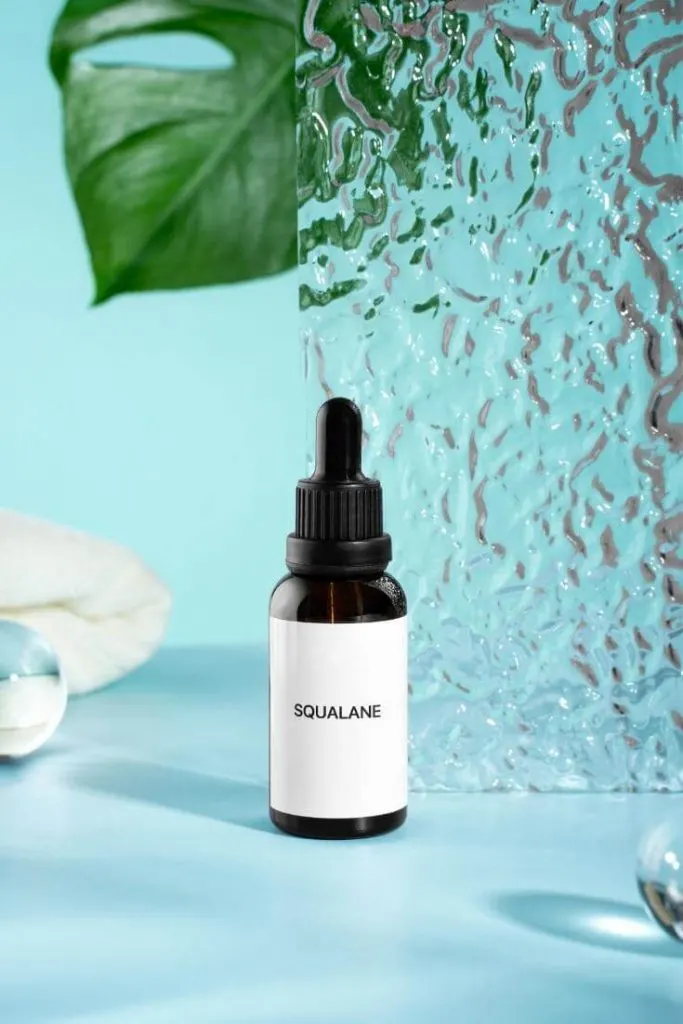
What does squalane do for the skin?
The benefits of squalane can be seen across the board. Here are some of the many benefits:
- Natural emollient
- Moisturizer
- Anti-inflammatory
- Anti-aging
- Protecting
- Balancing
Emollient
This oil’s natural emollient properties make it a great choice for anyone who needs to increase skin hydration.
It also helps reduce transepidermal water loss across the skin's barrier, helping your skin use the moisture in the air to stay hydrated.
Anti-inflammatory
Squalane also has anti-inflammatory properties that help reduce inflammation, irritation, and redness in skin. This means it is an excellent choice for individuals with acne-prone or blemish-prone skin to reduce swelling and redness. It can also help reduce irritation from skin conditions such as rosacea, eczema, and psoriasis.
Anti-aging
Squalane is also well-known for its anti-aging effects; it can help reduce the appearance of fine lines and wrinkles as well as plump skin.
Antioxidant
Squalane is a natural antioxidant as well; this means that it can help protect your skin from free radical damage and UV damage.
Balancing
Squalane can help balance out even the most complicated skin; whether you have dry skin, oily skin, or skin disorders, squalane can help you get your skin under control.
Because squalane is so similar to skin’s natural lipids and oils, our bodies are able to use it more readily than some other ingredients.
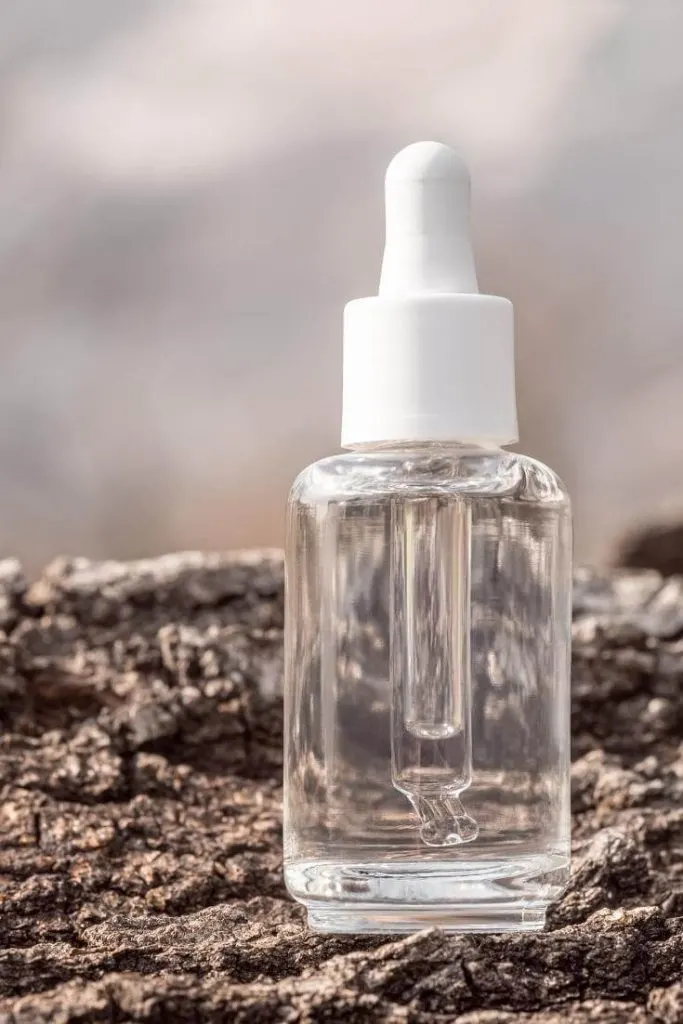
When should you use squalane?
This powerhouse ingredient can easily be incorporated into almost any skincare routine and can be used on various skin types, including those with sensitive skin.
While squalane oil is not likely to clog pores, it is important to remember that you should only apply squalane oil or oils containing squalane to clean skin.
Squalane is best applied to clean skin and before applying a moisturizer. Because it is so similar to skin’s natural oils, applying directly to skin before other products gives it a chance to absorb into skin and give you more of the benefits you are looking for!
Where to Buy Quality Squalane Oil

Biossance 100% Squalane Oil | Amazon
Sustainable, Pure and Vegan Facial and Body Squalane Oil Derived from Sugarcane. Weightless and Fast Absorbing Hydration
Olive Squalane
Squalane is a hydrogenated version of olive oil squalene, made to be more durable and non-oxidative. Squalene is present in human sebum and is supposed to lubricate and protect the skin.
Neossance Squalane from Sugar
Neossance™ Squalane made by Amyris, a US firm that has developed a revolutionary process to create this GMO-free, sugar-based, ecologically green product that previously could only be obtained from shark liver or olive oil.
Squalane FAQs
Do I use squalane after moisturizer?
In order for you to get the most benefits from adding squalane into your routine, we recommend applying it before you apply your moisturizer.
Can I use squalane and hyaluronic acid together?
Yes! Using squalane and hyaluronic acid together makes for a wonderful anti-aging combination. Both of these ingredients are great skin moisturizers and help reduce signs of aging while plumping and nourishing skin.
Is squalane good for older skin?
Squalane is an excellent choice for anyone who wants to reduce those pesky signs of aging. It is an ingredient that will help plump dehydrated skin and restores youthfulness.
Can I use too much squalane?
There is such as thing as too much of a good thing! While squalane is a wonderful ingredient, it is important to use it in moderation alongside your other natural skincare products. Overusing any ingredient or oil can lead to skin irritation and clogged pores.
Can you use squalane oil under eyes?
Because squalane penetrates skin easily and quickly, you can use it in your eye area. This includes under your eyes and on your eyelids. It will help get rid of those fine lines that tend to accumulate around your eyes and reduce puffiness.
Does squalane lighten skin?
Squalane can help improve your complexion by lightening scars, freckles, and blemishes. It can also help reverse UV damage while protecting skin from further damage and blemishes.
Wrapping things up
All-in-all squalane is a pretty impressive ingredient that can easily be added to your routine to boost your skin. There are many cruelty-free ways to source squalane including in natural skincare carrier oils that are already great for your skin!
If you enjoyed learning all about squalane, be sure to pin this post for later!
